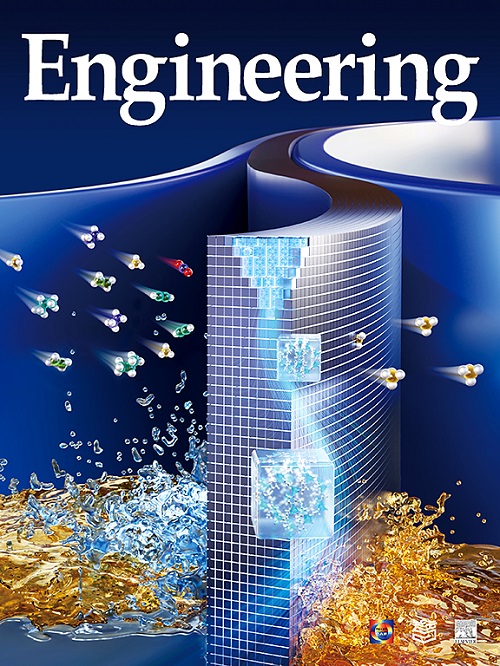新型动态建筑围护结构相变热二极管的材料与结构优化
IF 10.1
1区 工程技术
Q1 ENGINEERING, MULTIDISCIPLINARY
引用次数: 0
摘要
通过建筑围护结构进行被动式节能是减少能源消耗和碳排放的关键策略。但传统技术受控制机制繁琐、调节范围窄的限制。为了克服这些限制,我们提出了一种具有增强的单向传热能力的新型相变热二极管。这种热二极管利用疏水和亲水材料,在材料制造和结构应用方面具有双重优势。为了验证这种方法在建筑应用中的潜力,实验比较了不同疏水材料和真空对热二极管性能的影响。最佳配方的材料易于大面积制造,热整流范围从8.72到23.62,因此提供了广泛的调整范围。对于结构应用,热二极管可以与建筑围护结构相结合,以创建一个动态围护结构,用于被动散热和绝缘。仿真研究证实,该动态调节方法具有优越的调节能力,比传统的动态调节方法节能效果更好。具体而言,中国不同气候带的制冷节能达到11.83%至21.36%。这项研究促进了建筑和材料领域的交叉创新,为开发动态建筑围护结构提供了基础参考。本文章由计算机程序翻译,如有差异,请以英文原文为准。
Material and Structural Optimization of Novel Phase-Change Thermal Diode for Dynamic Building Envelope
Passive energy savings through the building envelope represent a critical strategy for reducing both energy consumption and carbon emissions. However, traditional technologies are limited by cumbersome control mechanisms and narrow adjustment scopes. To overcome these limitations, we propose a novel phase-change thermal diode with an enhanced unidirectional heat-transfer capacity. This thermal diode utilizes hydrophobic and hydrophilic materials, presenting dual benefits in material fabrication and structural applications. To verify the potential of this approach for building applications, the effect of different hydrophobic materials and vacuum on the performance of the thermal diode were compared experimentally. The optimally formulated material, which is readily manufacturable over large areas, demonstrated thermal rectification ranging from 8.72 to 23.62, thus offering an extensive adjustment range. For structural applications, the thermal diode could be combined with the building envelope to create a dynamic envelope for passive heat dissipation and insulation. Simulation studies confirmed that this novel dynamic adjustment method provides superior adjustment capabilities and achieves greater energy conservation than conventional dynamic methods. Specifically, cooling energy savings between 11.83% and 21.36% were attainable across various climate zones in China. This research fosters cross-innovation in the fields of buildings and materials, serving as a foundational reference for developing dynamic building envelopes.
求助全文
通过发布文献求助,成功后即可免费获取论文全文。
去求助
来源期刊

Engineering
Environmental Science-Environmental Engineering
自引率
1.60%
发文量
335
审稿时长
35 days
期刊介绍:
Engineering, an international open-access journal initiated by the Chinese Academy of Engineering (CAE) in 2015, serves as a distinguished platform for disseminating cutting-edge advancements in engineering R&D, sharing major research outputs, and highlighting key achievements worldwide. The journal's objectives encompass reporting progress in engineering science, fostering discussions on hot topics, addressing areas of interest, challenges, and prospects in engineering development, while considering human and environmental well-being and ethics in engineering. It aims to inspire breakthroughs and innovations with profound economic and social significance, propelling them to advanced international standards and transforming them into a new productive force. Ultimately, this endeavor seeks to bring about positive changes globally, benefit humanity, and shape a new future.
 求助内容:
求助内容: 应助结果提醒方式:
应助结果提醒方式:


